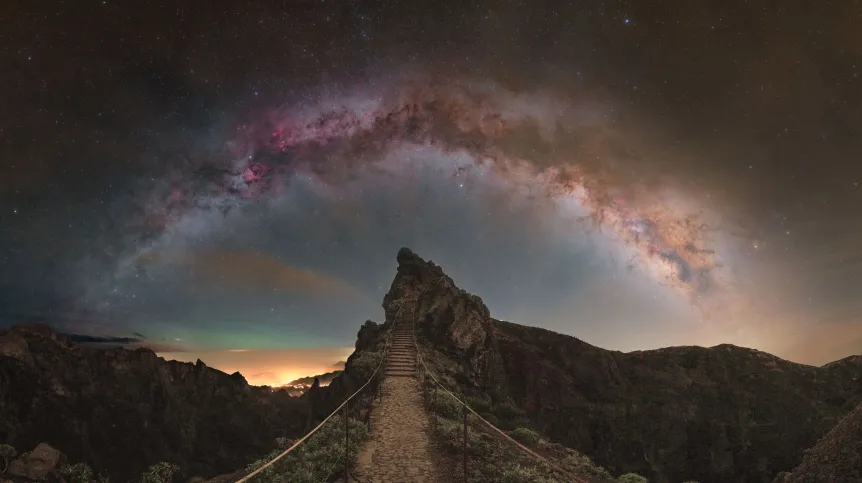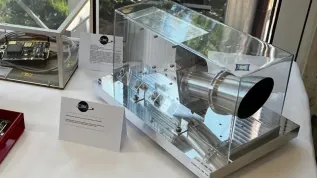
A photograph of what appears to be stairs leading to the Milky Way taken by Polish astrophotographer Marcin Rosadziński was published by the American space agency NASA as the Astronomy Picture of the Day. This is his second photo selected by NASA.
Astronomy Picture of the Day (APOD) website has been run by NASA since 1995. One photo of astronomical objects or astrolandscape is published every day. It is the most prestigious website for astrophotographers, and publishing a photo there is a great distinction for the author.
This is the second time Rosadziński's photography has been featured on APOD. The previous one was published on July 18, 2023, when NASA selected his image of the Milky Way over the Roque de los Muchachos Observatory on the island of La Palma.
'In the case of Astronomy Picture of the Day, there is huge competition among astrophotographers from around the world, both among people who photograph objects in the sky as a hobby and among photos from space telescopes. So far, few people from Poland have had the opportunity to see their works on APOD, and being selected twice is rare and proves the great quality of the Polish astrophotographer's photographs', says Tomasz Kundera from the Astronomical Observatory of the Jagiellonian University in Kraków, who coordinates the Polish translations of APOD.
Rosadziński took his latest APOD photo on April 15, 2024 on the Portuguese island of Madeira. He chose the viewpoint known as Pedra Rija, located on a difficult mountain trail between the two highest peaks on the island.
'So far, taking this photo probably cost me the most effort. Just getting to this place is about 1.5 km. It doesn't seem like much, but with an almost 10kg backpack the perspective changes drastically and after a sleepless night, returning to the parking lot near the Pico do Areeiro, where you only have to go uphill, was a really big challenge. I will also add that due to weather conditions, I was in this place at night twice', Rosadziński says.
The space photographer prepared to take the photo even before his trip to Madeira. He also visited the viewpoint earlier during the day to check everything out. The final image is a composite of 7 sky panels and 7 foreground panels. In the case of the sky, each panel has parameters of 2x25s, ISO1600. The terrestrial landscape is consists of 1x180s, ISO1600 panels. The photographic equipment was a Canon 6D (modified for astrophotography purposes) with a Samyang 24 mm 1.4 (f/2.8) lens.
Rosadziński says that you do not need to have expensive photographic equipment to try your hand at landscape astrophotography. 'All you need is a regular DSLR camera and a fast wide-angle lens. Of course, with longer exposure times you will need a device that will make the stars in the sky stay still, but for starters you can take photos without this device, with shorter exposure times and a higher ISO', he says.
Professionally, Rosadziński works in an international business transformation company. Astrophotography has been his hobby for three years. He lives in Modlniczka near Kraków.
Astronomy Picture of the Day has many language versions, including Polish. Descriptions of photos in Polish are available at this address.
The international astrophotography competition AstroCamera has also been regularly organized in Poland for a long time. It is run by Hevelianum, and the deadline for submitting works for this year's edition was May 31. (PAP)
cza/ agt/ kap/
tr. RL













